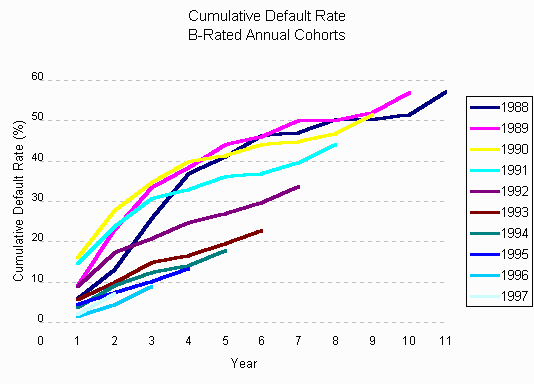Last I saw, Moody's expected 2012 default rate for U.S. non-investment grades was 3.5% and the weighted average yield was 6.57%. Comfortably covered right? More like comfortably numb.
The market is priced to perfection.
Back in September LearnBonds, usually a very smart site, made this statement:
...From 1920 to 2011, the average annual default rate for non-investment-grade corporate bonds was 2.802%. That compares to a 13.076% default rate during the financial crisis in 2009 and the highest single-year default rate of 15.641% in 1933. During the worst of the Great Depression and during what was perhaps the worst financial crisis in U.S. history, defaults on high-yield bonds reached levels in the 13% to 16% region. The relatively low average annual default rate, combined with what appears to be an upper bound for default rates in the 13% to 16% region, seems to imply that investing in the high-yield market is not as scary as it is sometimes made out to be....The problem arises when one realizes that the credits don't usually default in year one after issuance, it is a cumulative process. Here's William Bernstein's Efficient Frontier looking at the 90's cohorts, usually considered a good decade for the economy and business:
The point is: If cumulative default rates get above that 6.57% yield the market as a whole is in a loss-making position. Here's Felix Salmon back in 2009:
...The second graph [above] is particularly interesting to me, since it really puts the Great Moderation in perspective. A couple of years from 2004 through 2007 doesn’t make a Great Moderation; for that you really want to look at the period from say 1943 to 1970. One of the consequences of the rise in the pace of financial innovation of late is that the global financial-services industry could take a really very short-lived decline in default rates and credit-market volatility, and turn it into something so dangerous as to create the worst global recession in living memory. Once upon a time, you could go for decades without seeing the default rate rise over 3%. Nowadays, the chase for return on equity won’t ever let that happen.And here's another angle, from FT Alphaville:
Take note of the following story from IFR. It could turn out to be very important:See also:
Jan 4 (IFR) – The yield-to-worst in the high-yield market dipped to its lowest level ever this week, as risk markets rallied on the fiscal cliff agreement. Dropping below 6% for the first time in history, the yield to worst on the Barclays high-yield index fell to 5.96% on Wednesday and pushed even lower to 5.90% on Thursday. This compares to 6.13% on Monday and 8.14% at the start of 2012.The yield to worst are the returns that are likely to be received in the worst possible scenario.
The backup in US Treasury yields mid-week caused the average option-adjusted spread to tighten to 493bp on Wednesday and 484bp on Thursday, from 511bp on Monday. A year ago, it was quoted at 682bp. This low-yield environment allowed the first US high-yield issuer of the year to price its deal at a super-low rate. Crown Americas captured a 4.5% yield on its new upsized US$800m 10-year bullet issue, pricing the deal at par Thursday through Deutsche Bank, BNP Paribas, BofA Merrill, Citi and Wells Fargo.
Dare we say the compression we’re witnessing in the high-yield market has the inklings of CDO-era mispricing?
FT Alphaville attended a seminar by high-yield specialists Rogge Global last month, where we had the chance to speak with fund manager David Newman.
He had some very interesting points about what’s been going, not least with regards to something he described as the “zombie credit” effect.
Loosely speaking, everybody knows there’s a shortage of yield in the market.
This has made the asset class exceptionally attractive in the post-crisis environment.
But what’s really interesting is not really that high-yield is attractive in and of itself, but rather which particular segment of the high-yield market the money has been flowing to....MORE
Kids, If You Weren't Around to Feed on Junk Bond Defaults, Here's Another Chance
Credit Markets: The Next Big Short
Merrill: "Future 10% High-Grade Corporate Bond Returns ‘Mathematically Impossible’"

